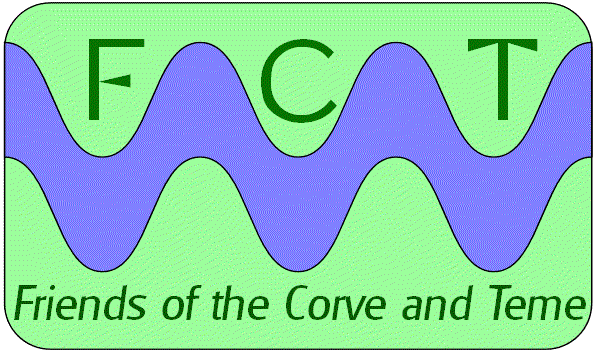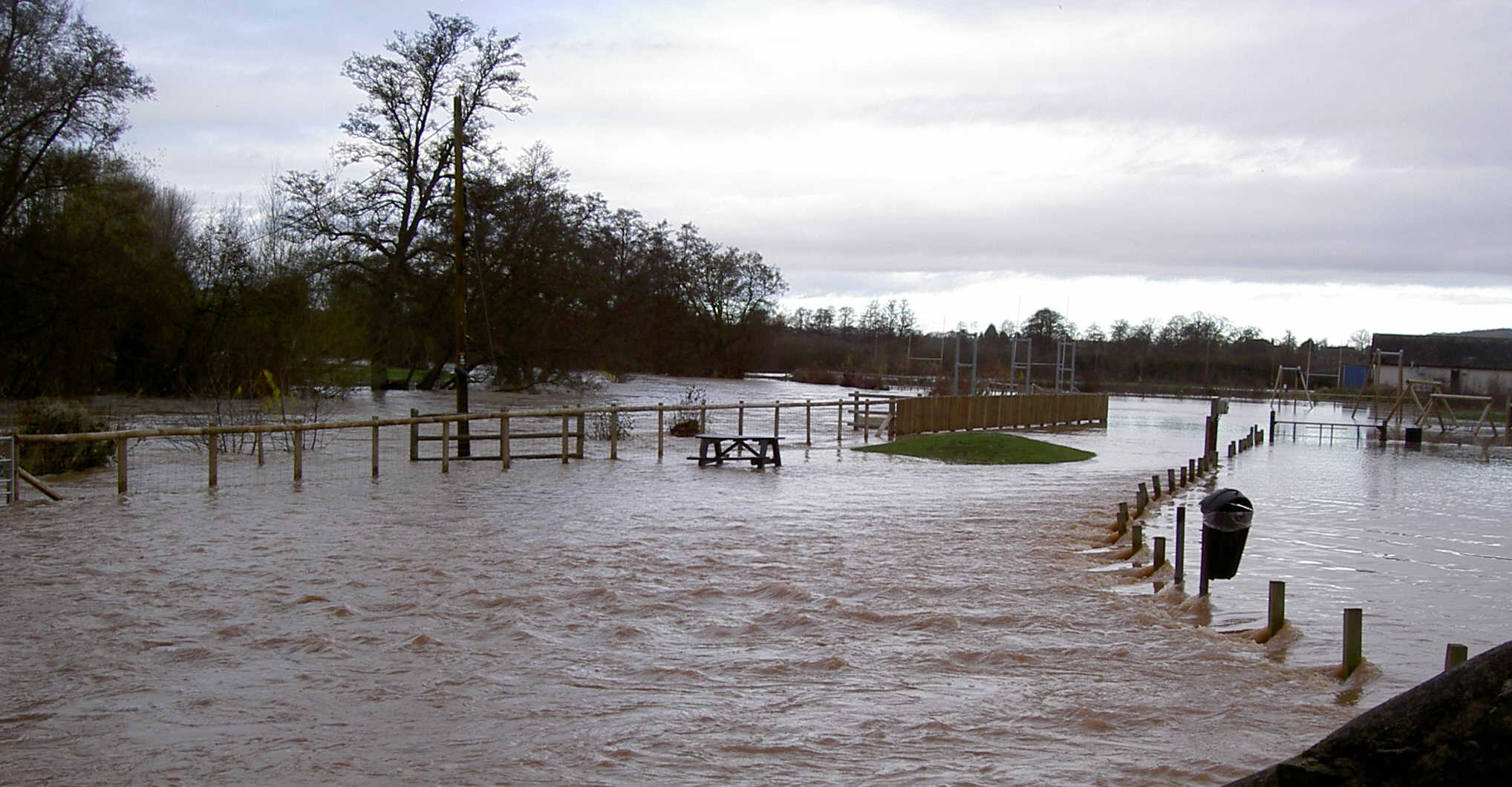 |
Friends of the Corve and Teme Ludlow's flood action and river environment group |
The meaning of floodingWhat do we mean by flooding? Mention the word 'flood' and most people think of heavy rainfall causing rivers to burst their banks. But there are many reasons for and definitions of flooding:
The River Teme and Linney recreaction ground: an example of combined fluvial and groundwater flooding Other sources of flooding include:
Primary effects of floodingThe immeidiately obvious risks include loss of life, damage to buildings and other structures, including bridges and sewerage. Floods also frequently damage power transmission and sometimes power generation, which then has knock-on effects caused by the loss of power. This may include loss of water supply, loss of drinking water, or severe water contamination. It may also cause the loss of sewage disposal facilities. Lack of clean water combined with human sewage in the flood waters and the increased prevalence of rats raises the risk of waterborne and other diseases. These can include typhoid, giardia, cryptosporidium, cholera and Weil's disease to name a few. Damage to roads and transport infrastructure may make it difficult to mobilize aid to those affected or to provide emergency medical treatment. Flood waters typically inundate farm land, making the land unworkable and preventing crops from being planted or harvested, which can lead to shortages of food both for humans and for farm animals. Entire harvests for a country can be lost in extreme flood circumstances. Some tree species may not survive prolonged flooding of their root systems. Secondary and long-term effectsEconomic hardship due to a temporary decline in tourism, rebuilding costs, or food shortages leading to price increases is a common after-effect of severe flooding. The impact on those affected may cause psychological damage, in particular where deaths, serious injuries and loss of property occur. Some businesses never recover, whilst insurance goes up for both domestic and commercial properties. |
Terms and Conditions of Use of this Website
By using this site you confirm that you accept these terms of use and that you agree to comply with them. If you do not agree to these terms, you must not use this site.
FCT is the owner or the licensee of all intellectual property rights on this site, and of the material published on it. Those works are protected by copyright laws and treaties around the world. All such rights are reserved.
You must not use any part of the content on this website for commercial purposes without obtaining a licence to do so from FCT or its licensors.
You may print off one copy, and download extracts, of/or any page(s) from this site for your personal use and you may draw the attention of FCT within your organisation to content posted on its site. You must not modify the paper or digital copies of any materials you have printed off or downloaded in any way, and you must not use any illustrations, photographs, video or audio sequences or any graphics separately from any accompanying text. All identified authors and contributors of content on this website must always be acknowledged.
If you print off, copy or download any part of FCT’s website in breach of these terms of use, your right to use the site will cease forthwith and you may be requested by FCT to return or destroy any copies of the materials derived from the web site in your possession.
Disclaimer
The content of this site is provided for general information only, and is not intended to amount to advice on which you should rely. Before taking (or refraining from) any action based on the content of this site you must obtain professional or specialist advice.
Although FCT makes reasonable efforts to update the information on this site it makes no representations, warranties or guarantees (whether express or implied) that the content on its website is accurate, complete or up to date.
FCT has endeavoured to ensure its accuracy but makes no guarantee concerning the information described herein, nor its usage in and/or applicability to particular situations. FCT accepts no liability for the consequences of the use by others of any information acquired or accessed via this website. FCT reserves the right to alter or modify the contents of this website at any time without notice. |
Friends of the Corve and Teme About us News and Events What can be done Flood history Contact FCT
